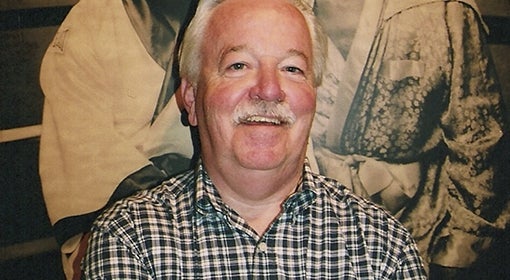To work in outer space, astronauts must be resilient, efficient, and versatile; the same is true for the computers that aid in their missions. Most computers, however, cannot reliably and efficiently function in the harsh conditions beyond Earth’s atmosphere, or even endure the journey to get there. At the National Science Foundation (NSF) Center for Space, High-Performance, and Resilient Computing (SHREC) at Pitt, researchers are at the forefront of investigations into smart technology equipped for use in extraterrestrial environments.
“Computers are the future astronauts and at the heart and soul of anything you do in space,” including scientific study, satellite communications, and defense surveillance, says SHREC director, Alan D. George. “We develop and test ways to increase performance, reduce power consumption, and meet the demands of space computing.”
But how do researchers build a computer that fulfills all of those requirements? The answer lies in reconfigurable computing, one of the SHREC lab’s primary focuses and an approach that allows a computer’s hardware (the physical machine) to be manipulated and changed using software (programming). Using reconfigurable computing, George and his team have developed a specialized space processor, a hybrid computer that meets a variety of needs.
 “Like switches on a railroad track,” says George, “you can basically create connections in whatever way you want.” In other words, scientists on Earth can use software to command the processor in space to run a variety of applications without needing extra parts.
“Like switches on a railroad track,” says George, “you can basically create connections in whatever way you want.” In other words, scientists on Earth can use software to command the processor in space to run a variety of applications without needing extra parts.
The innovation has already been put to work. In March 2017, George’s team sent a payload of two space processors to the International Space Station via the SpaceX Dragon Mission. From SHREC’s new, NASA-quality lab in Oakland, researchers including undergraduate and graduate students can run experiments on the processors while the machines orbit over 250 miles above Earth.
I can wake up in the morning and send commands to space computers on the International Space Station that we developed in our lab.
Christopher Wilson, doctoral student
“Our research never needs to be some intangible, theoretical project that will never have any practical use, because we have the opportunities to put our research to use in space,” says doctoral student Christopher Wilson. “I can wake up in the morning and send commands to space computers on the International Space Station that we developed in our lab.”
In January 2017, SHREC (formerly the NSF Center for High-Performance Reconfigurable Computing) found a new home at the University of Pittsburgh, accompanied by George, now the Swanson School’s Mickle Endowed Chair of the Department of Electrical and Computer Engineering. He founded the lab in 2007 at the University of Florida, growing it into a collaboration of more than 30 industrial, governmental, and academic partners. Pitt is now the lead institution of four SHREC sites. It’s a good home base, says George, for forging new partnerships with rising researchers and local and national organizations that have Earth-bound applications for the center’s cutting-edge research.
In the meantime, the SHREC team is already developing a second payload of processors to send to the International Space Station. Scheduled to launch in early 2019, it will be the first supercomputing payload completely designed and produced by an academic institution for space—which is quite the stellar achievement.
Breakthroughs in the Making
Cause Corrected
What caused the 2007-09 housing crisis? Research conducted by Pitt economist Stefania Albanesi and two colleagues has identified a new explanation. Their analysis of credit data from 1999-2013 found that most of the rise in mortgage credit during the housing boom went to borrowers with mid- to high-credit scores, and that most of the rise in mortgage defaults that initiated the crisis also came from these borrowers—not subprime borrowers, as some have argued. The study was published by the National Bureau of Economic Research.
Viral Clue
A common virus may trigger celiac disease, according to a study by researchers including Pitt pediatrics chair Terence Dermody. Celiac disease is a hereditary autoimmune disorder that causes severe intolerance to gluten. The study found evidence that exposure to reovirus, which is otherwise benign, may prompt the emergence of the condition in a genetically predisposed person. Published in Science, the findings advance the possibility of a vaccine that could stop autoimmune disorders like celiac disease before they start.
Back, Pain
More than 40 percent of patients with low back pain are prescribed opioids at some point. Pitt researchers are working to lower that number by participating in an NIH-funded, multi-institution study investigating non-drug approaches to treating and preventing chronic low back pain. Pitt’s role will focus on physical therapies and involve a number of researchers including Mike Schneider of the School of Health and Rehabilitation Sciences, who is co-principal investigator of the clinical trial investigating the effectiveness of spinal manipulation and supported self-care strategies.
Opening image: SHREC's STP-H5 computer on the International Space Station.
This article appeared in the Winter 2018 issue of Pitt Magazine.





